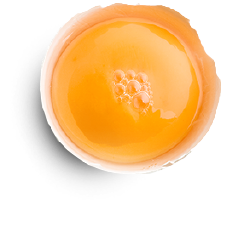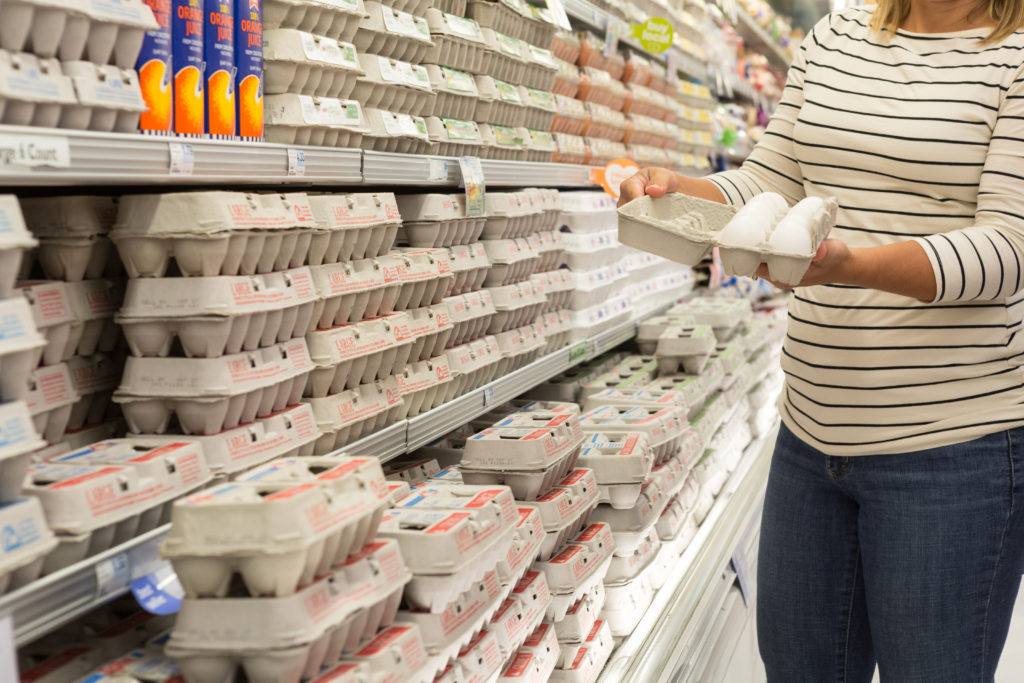Filter By

All about egg sizes, types, grades and more
The egg is a versatile food with many options available for today’s consumers. Shell eggs are the raw eggs that are available in retail stores.

Grade of eggs, AA, A, or B, is determined by the interior quality of the egg and the appearance/condition of the shell.
Eggs can be brown or white eggs.
Egg sizes are jumbo, large, medium, and small.
Egg types include conventional, cage-free, free-range, organic, and enriched.
Raw shell eggs sold in grocery stores, or to the foodservice industry, are carefully washed and sanitized before being graded, packaged, refrigerated, and transported to stores.
Grading of eggs is a voluntary program run by the USDA that checks for both interior and exterior egg quality. Eggs of any quality grade may differ in weight or size.
Grade AA – eggs have whites that are thick and firm; yolks that are high, round, and practically free from defects; and clean, unbroken shells.
Grade A – eggs have characteristics of Grade AA eggs except that the whites are “reasonably” firm.
Grade B – eggs have whites that may be thinner and yolks that may be wider and flatter than eggs of higher grades. The shells must be unbroken but may show slight stains. This grade is usually used to make liquid, frozen, and dried egg products.
Size does not refer to the dimensions of an egg or how big it looks but tells you the minimum required net weight per dozen eggs. While some eggs in the carton may look slightly larger or smaller than the rest, it is the total weight of the dozen eggs that put them in one of the following classes:
| Size or Weight Class | Minimum net weight per dozen |
| Jumbo | 30 ounces |
| Extra Large | 27 ounces |
| Large | 24 ounces |
| Medium | 21 ounces |
| Small | 18 ounces |
| Peewee | 15 ounces |
All egg cartons have the following safe handling message to remind consumers about refrigeration and cooking.
SAFE HANDLING INSTRUCTIONS: To prevent illness from bacteria: Keep eggs refrigerated, cook eggs until yolks are firm, and cook foods containing eggs thoroughly.
Shell eggs can be pasteurized and are also available at most grocery stores. Pasteurized eggs must be kept refrigerated and should be handled like shell eggs. These eggs can be safely used in recipes calling for raw or lightly cooked eggs.
Egg Products
The term “egg products” refers to further processed or ready-to-use products made after shell eggs are broken and processed. Egg products come in many forms and include whole eggs, egg  whites, and egg yolks in frozen, refrigerated liquid, and dried forms.
whites, and egg yolks in frozen, refrigerated liquid, and dried forms.
Specialty egg products include pre-peeled hard-cooked eggs, egg salad, pre-cooked omelets, egg patties, quiches, scrambled eggs, fried eggs, and others.
Egg products are popular in foodservice operations because of convenience and also cost savings in labor, storage, and portion control. Frozen, refrigerated liquid and dried egg products are similar to shell eggs in nutritional value and most functional properties.
By law, all egg products are processed and pasteurized in sanitary facilities under the supervision of the USDA. In pasteurization, the liquid part of the egg is rapidly heated and held at a minimum required temperature for a specified time. This process destroys Salmonella, but it does not cook the eggs or affect color, flavor, nutritional value, or use. Dried eggs are pasteurized by heating in the dried form. It is important to remember that while egg products are pasteurized, proper handling and storage is still a key part of providing a safe product.
Pasteurized egg products help ensure food safety. These products may be used to protect high-risk populations like the elderly, babies and toddlers, or immune-compromised individuals.
Follow us on Facebook and Twitter for more egg safety tips!

 Back
Back